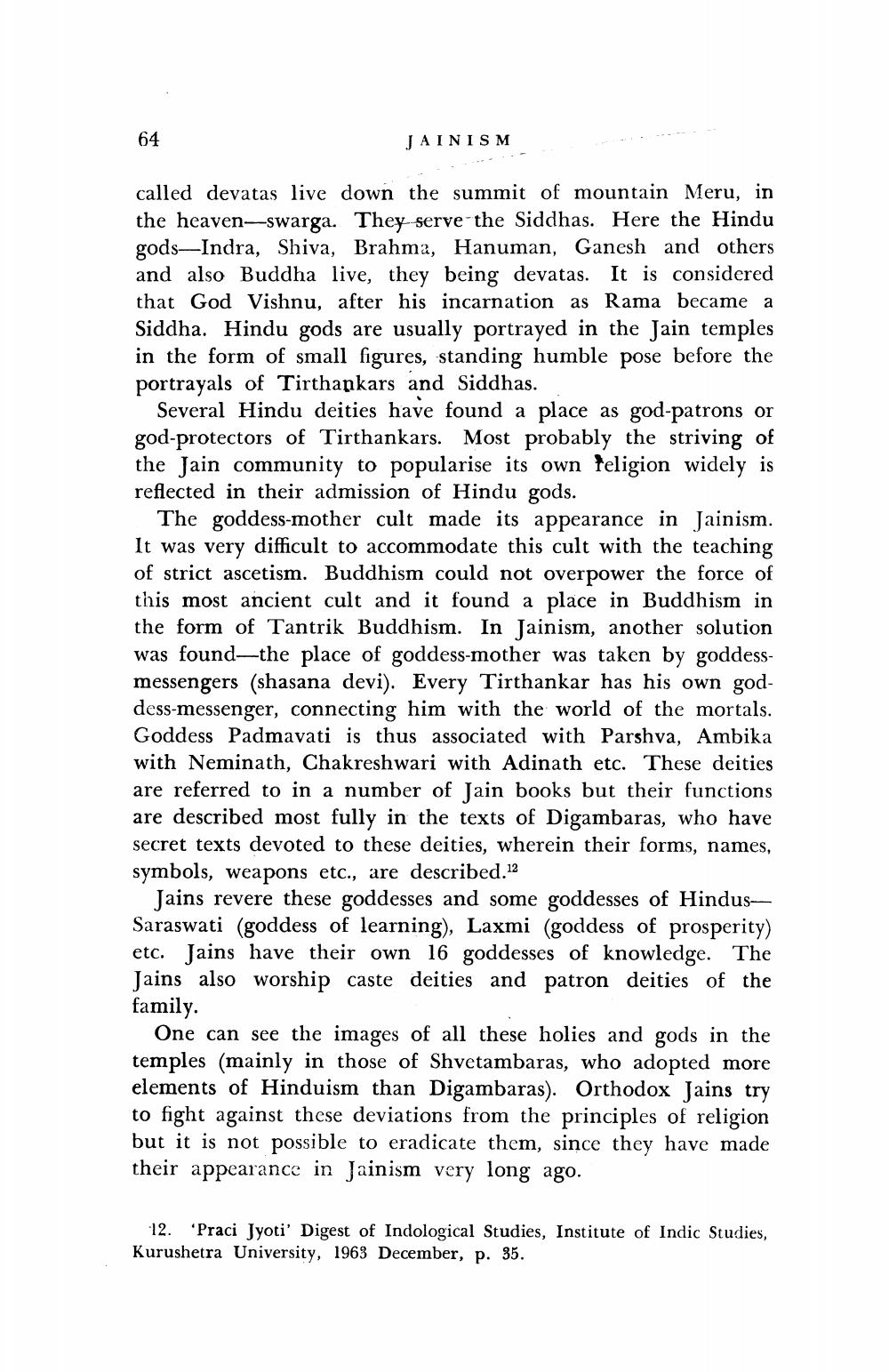________________
64
JAINISM
called devatas live down the summit of mountain Meru, in the heaven-swarga. They serve the Siddhas. Here the Hindu gods-Indra, Shiva, Brahma, Hanuman, Ganesh and others and also Buddha live, they being devatas. It is considered that God Vishnu, after his incarnation as Rama became a Siddha. Hindu gods are usually portrayed in the Jain temples in the form of small figures, standing humble pose before the portrayals of Tirthankars and Siddhas.
Several Hindu deities have found a place as god-patrons or god-protectors of Tirthankars. Most probably the striving of the Jain community to popularise its own teligion widely is reflected in their admission of Hindu gods.
The goddess-mother cult made its appearance in Jainism. It was very difficult to accommodate this cult with the teaching of strict ascetism. Buddhism could not overpower the force of this most ancient cult and it found a place in Buddhism in the form of Tantrik Buddhism. In Jainism, another solution was found the place of goddess-mother was taken by goddessmessengers (shasana devi). Every Tirthankar has his own goddess-messenger, connecting him with the world of the mortals. Goddess Padmavati is thus associated with Parshva, Ambika with Neminath, Chakreshwari with Adinath etc. These deities are referred to in a number of Jain books but their functions are described most fully in the texts of Digambaras, who have secret texts devoted to these deities, wherein their forms, names, symbols, weapons etc., are described.12
Jains revere these goddesses and some goddesses of HindusSaraswati (goddess of learning), Laxmi (goddess of prosperity) etc. Jains have their own 16 goddesses of knowledge. The Jains also worship caste deities and patron deities of the family.
One can see the images of all these holies and gods in the temples (mainly in those of Shvetambaras, who adopted more elements of Hinduism than Digambaras). Orthodox Jains try to fight against these deviations from the principles of religion but it is not possible to eradicate them, since they have made their appearance in Jainism very long ago.
12. 'Praci Jyoti' Digest of Indological Studies, Institute of Indic Studies, Kurushetra University, 1963 December, p. 35.




